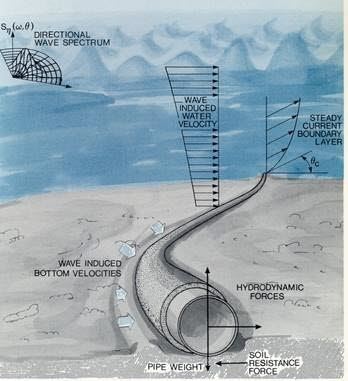SINTEF Ocean has been working actively with research and development related to dynamic response of subsea pipelines, umbilicals and power cables for more than four decades.
Phase I of the DROPS multiclient project (JIP) was launched in 2017, focusing on developing a full-featured 3D engineering tool to overcome the 1D and 2D limitations in the most common on-bottom stability (OBS) tools in use today.
Unnecessary conservatism may be avoided by accounting for 3D effects such as 3D seabed terrain, curved routing, stiffening effect from tension, shoulder effects and reduced loading at free spans. These effects can now be investigated by means of the developed functionality.
The new analysis features were implemented into the SIMLA software framework which is SINTEF’s state-of-the-art software tool for non-linear static and dynamic analysis of subsea pipelines, umbilicals and power cables. Phase I of the DROPS JIP was successfully completed in February 2021.
The work was continued in Phase II of the JIP (2021-2024) with particular focus on on-bottom stability of small diameter products (i.e. target OD = ~8 to ~30 cm) in intermediate/shallow water.
Phase II included improved pipe-soil interaction models, improved hydrodynamic load models accounting for boundary layer effects and second order wave kinematics.
DROPS JIP Phase III starts autumn 2024
The main objective of Phase III of the JIP is to solve engineering challenges in global response analysis of subsea pipelines and cables by including 3D non-linear time domain VIV analysis of free spans.
The advantages of including VIV analysis of free spans in a general 3D non-linear time domain analysis tool can briefly be summarized as follows:
1) VIV fatigue from combined steady current and wave-induced oscillatory flow can be calculated without questionable simplifications, and internal slug flow conditions may also be included.
2) All load contributions included in the same time domain analysis, i.e. on-bottom stability and VIV of free spans can be assessed simultaneously.
3) All non-linear structural effects (tension variation, contact, etc.) included in the same analysis.
The scope of work in Phase III will also include activities to further improve the new hydrodynamic load models for combined wave-current boundary layer and gap effects.
For more information about Phases I, II and III of the DROPS JIP and SIMLA, please follow the links below.
Download more information about DROPS JIP Phase I (2017-2021)
Download more information about DROPS JIP Phase II (2021-2024)
Download more information about DROPS JIP Phase III (2024-2026)

